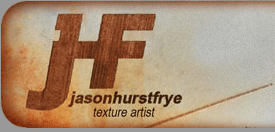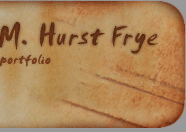This script will blast your site fullscreen, but still give the user the ability to resize and navigate (unlike the ‘fullscreen’ command). Just put it in the <head> section of your first page.
<script language="javascript">
<!--
top.window.moveTo(0,0);
if (document.all) {
top.window.resizeTo(screen.availWidth,screen.availHeight);
}
else if (document.layers||document.getElementById) {
if (top.window.outerHeight<screen.availHeight||top.window.outerWidth<screen.availWidth){
top.window.outerHeight = screen.availHeight;
top.window.outerWidth = screen.availWidth;
}
}
//-->
</script>
This is fairly straightforward. Your site is placed in the top frame of a stacked frameset. The lower frame (which loads last) is only one pixel high and contains an html page with a .swf that uses the getURL command to load a new blank document. Because this action is the last page loaded, your browser goes ‘back’ on that page (which automatically loads a new blank document again) and leaves the Flash content of your main document alone.
First, create 2 Flash documents. One is your main site, one is a .swf with the following code on a Movie Clip.
onLoad (){
getUrl "newBlankPage.html", target=_self ;
}
Make a new blank .html document entitled "newBlankPage.html" and another .html document named "goBack.html" with the .swf you just created.
Now when you assemble your site with a frameset like below,
<frameset rows="*,1" frameborder="NO" border="0" framespacing="0">
<frame src="main.html" name="main">
<frame src="goBack.html" name="ignoreMe" scrolling="NO" border="0" framespacing="0" noresize>
</frameset>
the lower half will create a loop for the browser that only breaks if the client rapidly clicks the back button.
By nesting your pertinent information in a pair of variables, this will mask your email from internet spiders that are combing the internet, looking for the ‘mailto:” tag. It will display on screen exactly as a standard <mailto:> tag does, and will even inherit CSS styles.
<script language=javascript>
<!-- mask my email
var email = "myName"
var emailHost = "myDomain.com"
document.write("<a href=" + "mail" + "to:" + email + "@" + emailHost + "?subject=Add_this_link" + ">" + "[email it to me]" + "</a>" + ".")
//-->
</script>
The last portion that reads "?subject=Add_this_link" is optional, that simply auto-fills the subject line of the email.
Easy enough. Imagine breaking up the browser into five columns. The middle column is your primary site content. The two columns straddling that are fixed-width pinstripes or drop shadows or some other framing device. Then the last two outermost columns are “the rest of the page” (as denoted by the “*” wildcard in their width attribute). If you center the middle three columns you get a nice dynamic page layout.
To do this, you will need three small graphic files. You could use plain color if you want, but that is so boring. One file is your main background image. A simple .gif that is 5 pixels x 5 pixels or so with a simple monochromatic palette works nice. Then you need your ‘edge’ graphics. For a pinstripe like mine on this site, a 5x5 pixel .gif works fine, but is you want a drop shadow or back light effect you probably want to go wider and transition it into your background tile. Keep in mind that whatever width that you set your edge tile to, is the width that you need to set the <td> width to.
<table width="100%" height="100%" border="0" cellpadding="0" cellspacing="0">
<tr valign="top">
<td width="*" background="images/tile.gif" bgcolor="#999999"> </td>
<td width="20" background="images/edgeTile_L.gif" bgcolor="#666666"> </td>
<td width="800" bgcolor="#CCCCCC">
<!-- put your site between here -->
<!-- and here -->
<td width="20" background="images/edgeTile_R.gif" bgcolor="#666666"> </td>
<td width="*" background="images/tile.gif" bgcolor="#999999"> </td>
</tr>
</table>
|











